All In The Family
December 2022
Record Collector Magazine
|
All In The Family
The inspiration for David Cassidy et al, The Cowsills are the pop family that stayed together; 57 years after their recorded debut, they are making some of the best music of their lives - their first new album in 30 years, Rhythm Of The World, was released last month. Bill Kopp talks to Bob, Paul and Susan Cowsill about the rain, the park, the fun, the horror - including an abusive father - and other things.
|
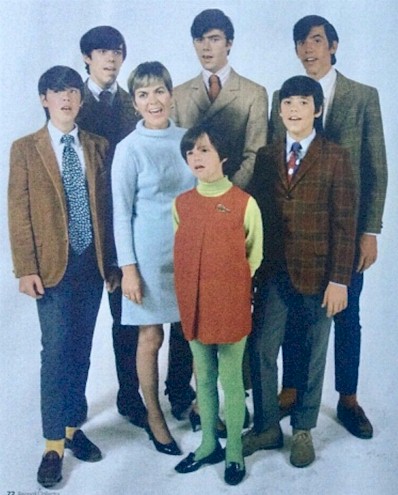
|
|
The Cowsills' time at the top of the pop world was dazzling and brief. The "family band" featuring siblings Bill, Bob, Barry, John, Paul and Susan plus "mini mom" Barbara scored four Top 40 singles in the US, including their million-selling debut, The Rain, The Park & Other Things. And their time in the spotlight made the group a prominent figure of pop culture. They appeared on The Ed Sullivan Show and countless other TV variety shows, toured the world and served as the real-life inspiration for The Partridge Family. But unlike that TV group, The Cowsills were a real band, they wrote songs, sang in glorious harmony, and played their own instruments both live onstage and in the studio. They even produced their own recording sessions.
It all seemed a recipe for long term success. Yet the ___ act in almost from the start. For better and (mostly) worse, The Cowsills career trajectory was tightly controlled by the patriarch of the family, William "Bud" Cowsill.
Bud and Barbara married young. A career US Navy man, Bud was away for long periods, seemingly, whenever he returned home for a brief break, Barbara got pregnant. Eldest son Bill Jr. was born in 1948; twins Bob and Richard followed in 1949; Paul was born in 1951. Barry was born in 1954. John in '56, and Susan in 1959.
"We were singing crazy cover songs and just being young"
While the family was still living in Canton, Ohio, Bill and Bob taught themselves how to play guitar. They quickly discovered that their innate musical abilities included perfect vocal harmony. "From Mom, we got the ability, the DNA strands to sings a melody," Bob says. "We're sure of that. From Dad, we got . . . other things."
Bud had no musical skills of his own. "He knew music," says Susan, "but he could not do music." A born leader, Bud ____ saw an opportunity in his sons' musical skills. So, he encouraged them to put together a group. They needed look no farther than their own household brother Barry quickly became proficient on drums. And when younger brother John learned to play drums, Barry shifted to bass.
Once the family relocated to Newport, Rhode Island, the group scored a regular gig in the local marina Banister's Wharf. Even though in 1965 its most senior member Bill was a man 17 years old (Barry was 11), the foursome impressed local audiences with their tight musicianship and precious vocals. "We brothers were quite good," says Bob. "That was one claim to fame we could [cover] The Beatles we could do them all."
|
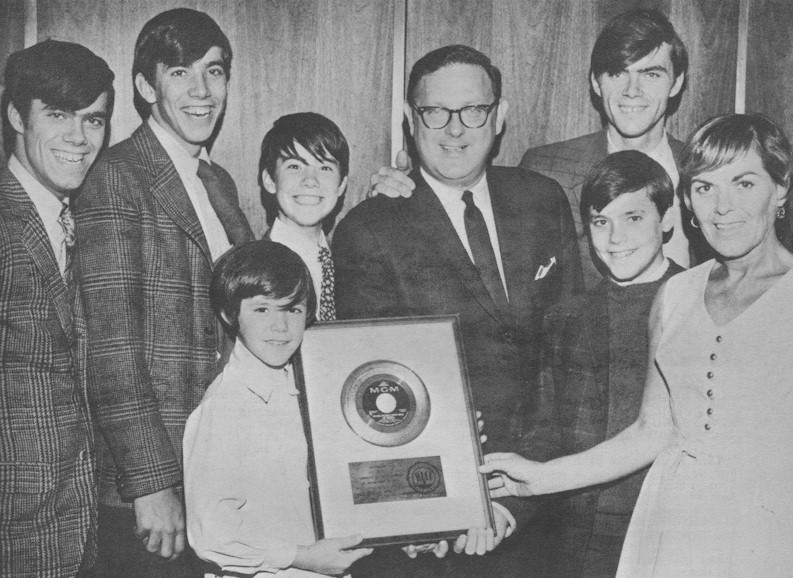
Frame at last - The Cowsills receive a gold disc for their first hit The Rain, The Park & Other Things (front row l-r) Susan, Barry, Barbara; (back row l-r) Bob, Paul, John. Recording Academy Chairman Mort Nasatir, and Bill; (makes photo, left) the group in 1969
|
|

|
|
In Newport, Bill established a lifelong friendship with Robert "Waddy" Wachtel. Bob says that Waddy's band was the local Rolling Stones to the Cowsill brothers' Beatles. Wachtel would go on to become a regular feature of Cowsills recordings throughout their 60s run. "Waddy is family," Susan says today. "He's a brother."
It was while playing at a local Newport club called Dorian's that the group caught their first big break. "In the audience one night was a guy from the Today Show," Bob recalls. "This was back in the days when Hugh Downs and Barbara Walters were the co-hosts." The Cowsills were invited to travel to New York City and perform on the live broadcast. "No one knew who we were," Bob admits. "But they gave us 20 minutes. We were singing crazy cover songs and just being young."
Through the Today show appearance, The Cowsills came to the attention of singer Johnny Nash, New York-based Nash had recently launched an independent record label, JoDa, with business partner Danny Sims. Through the black-owned label's primary focus was soul music, they signed The Cowsills foursome and ordered a single. "Everyone on the label but us were black," Bob says. "We were kind of an experiment."
Both sides of the record - All I Really Wanta Be Is Me and the flip And The Next Day Too - were original songs composed by brothers Bill and Bob. Though popular locally, the JoDa record didn't sell in great numbers. "They dropped us after that bombed," Bob says. But it was a start.
Mercury Records producer Shelby Singleton was always on the lookout for talent and when he happened upon the Cowsills, he signed them to a deal. With Singleton producing the sessions, the quartet cut two singles in 1966, Most of All, Siamese Cat and Party Girl b/w What's It Gonna Be Like. Singleton released both on Mercury associates label Phillip Records. Like the JoDa single, those records flew under the radar.
Undeterred, The Cowsill continued to sharpened their musical presentations in addition to their wide-ranging repertoire of songs, the quartet of Bill, Bob, Barry and John continued to write quality original material. Securing a management deal with music industry veteran Leonard Stogel, The Cowsills set their sights on a major-label recording contract.
Working with hit songwriter and producer Artie Kornfeld, The Cowsills recorded one of his tunes, The Rain, The Park & Other Things. But before cutting the song, Stogel and Kornfeld decided the group needed a change. "We'd been dropped from two labels," Bob explains. "So, they thought, 'How can we make (The Cowsills) different?" Over the stringent objections of the band, a reluctant Barbara Cowsill was added to the group as a vocalist. The Cowsills were now a quintet.
The producer and group knew they had something special with the sparkling example of sunshine pop. Executive at MGM Records agreed and signed The Cowsills. The group's self-titled debut album was released in 1967. Unusually for a debut LP, especially one featuring teenagers - seven of the record's 12 songs feature a Cowsill songwriting co-credit. The group played their own instruments on the sessions. And for all her per_____, Mom could in fact sing.
|
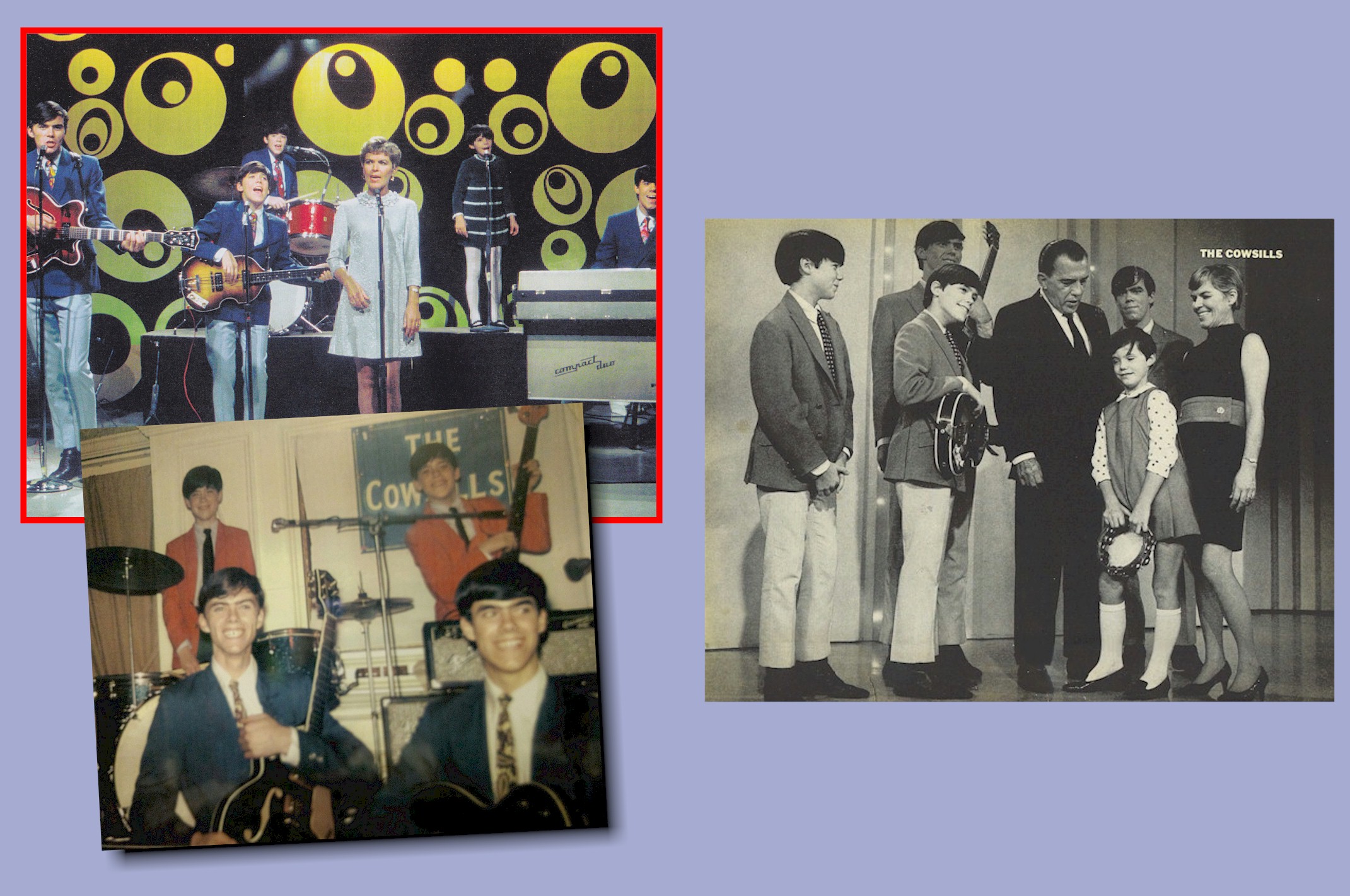
(clockwise from above): an early performance, pre-Susan; On The Tonight Show with Johnny Carson, 1970; with Ed Sullivan, 1967
|
|
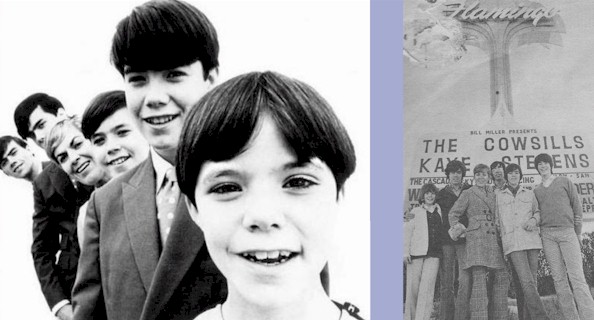
The long view - The Cowsills newest member, eight-year-old Susan, from the line-up in '67 and again in Vegas 1970, preceedin a 90s indie US release.
|
|
Save for Barbara, The Cowsill may have well been kids, but as Bob says, "the studio was our playground." He notes that the band came to MGM during an era when recording sessions were full of studio musicians. "But we sat with arrangers and went through things with them," he says. "And when it came to the studio and the stage, that was where Dad had to go away," Paul concurs. "Mom and Dad were pretty out-to-lunch about all that. We had our way in the studio pretty much all the time."
But outside of those settings, Bud Cowsill imposed his will. So, in short order, siblings Paul (age 16) and Susan (age eight) also became members of the family band. Luckily for the group, the two new additions to the lineup were endowed with preternatural musical talent on a par with their siblings.
"I had been watching and waiting, just because it seemed like a natural thing to do," Susan says. "But Bill made me audition before he'd even consider it." She wouldn't join in time for the debut single, but by the time The Cowsills hit the shelves, Susan was in the band. "When you see me on Ed Sullivan [29 October 1967] singing The Rain, The Park & Other Things, I'm in that band," she point out. "I had just joined."
The musically baron Bud Cowsill and Bob's twin brother Richard would be the only family members who were not also members of the pop group. (For a time, Richard would work as part of The Cowsills road management.) Paul was quickly integrated into the group as well and proved that he could hold his own. "I would come out in the second half [of live concerts] wearing a white suit," he recalls. "They would call me 'the Soul Man'. It was fun." Paul ___, "We've always had a ton of fun doing this, from when we were little kids." Susan recalls some of Paul's spotlights numbers: Mickey's Monkey, Reach Out (I'll Be There), Knock On Wood . . . Soul brother Paul," she ____.
On the heels of the group's first hit, a rapid fire succession of MGM albums and singles would follow. With Susan and Paul on board, 1968's We Can Fly was built around the hit single of the same name (Billboard No. 21, US) This time, nine of the LP's 11 songs were Cowsill originals. Moreover, brothers Bill and Bob carried a producers' credit for the album. MGM afforded unprecedented creative autonomy to the group, and The Cowsills proved themselves worthy of that latitude. "We were young, we were new, and we were writing frantically," says Bob. "So, anything [we wrote] that was good was going to get on the albums."
But in a preview of things to come, Bud had pushed Kornfeld out of the picture. "Dad fired Artie while we had the No. 1 record and were the No. 1 band." Bob says. "He fired him because Artie told Bill about pot. And our day, a military guy, said 'Nobody does that. You're fired!"
Bud Cowsill's bull-in-a-china shop approach may have opened doors for the family band, but his abusive, pugnacious attitude caused those same doors to shut nearly as quickly. "My dad did not have any finesse in society," Susan says. "And he was drunk half the time." Bob says that, while Bud's hard work helped The Cowsills take off, his reputation worked against their success. "He made it so that we became a hot potato in New York. People deal with us once, and that was it."
Luckily for the group, The Cowsills' combination of songwriting presence and smart selection of songs from other writers meant that success would continue. For the second 1968 Cowsills album, Captain Sand And His Ship of Fools, the hit single came in the form of Indian Lake (Billboard No. 10, US) Bill and Bob produced nine of the record's tracks.
By 1969, MGM had compiled a dozen sides into a best-of LP. Meanwhile, Bill and Bob decided to cut a Cowsills version of the theme from the wildly popular stage musical, Hair. MGM executives were against it, but The Cowsills pushed the issue. Recorded in the family band's garage, when released as a single Hair soared to the No. 2 spot on the US charts.
The same year, the group set out to prove that they were more than a family of freshly scrubbed pop stars. The Cowsills Live served up an eclectic set of songs drawing from the covers side of the band's repertoire. Pop gems by The Left Banke and Sopwich Camel got the Cowsills treatment (with theirtrademark sterling vocals). Less like numbers including The Beatles" Paperback Writer and Paul's vocal turn on Cream's Sunshine of Your Love showed that, at their core, The Cowsills were a rock band.
"Bill Handley was the [live] sound guy for The Cowsills Live," Bob recalls. Using two tracks equipped with mobile recording units. Hanley captured a pair of shows in Cleveland, Ohio. Once again, Bill and Bob Cowsill produced the resulting album. "The technology we were working with was very limited." Bob explains. "We were linking two machines in the booth, trying to make sense of it. It was a train wreck." Even with some studio sweetening - then and now a near-_____ practice when producing live albums - the record captures the fun and excitement of a Cowsills concert.
At their height, The Cowsills toured outside the US as well, visiting Europe twice (performing in Italy, Germany and Spain) and Mexico. "But not as much as we would have liked," Bob adds.
Doubling down on The Cowsills' wholesome image, the group appeared in 1969 print and television ads for the American Dairy Association, extoling the virtues of milk. A tie-in EP, The Cowsills Collection Album, was released the same year.
In a down-to-home repeat of Kornfeld's ousting from The Cowsills' orbit, the group suffered an even greater setback. Bill Cowsill had long clashed with Bud over various things, including his friendship with Waddy Wachtel. And when Dad discovered that Bill was now sneaking the pot he had heard about from Artie, he fired his eldest son from the group . . . and, as far as Bud was concerned, from the family.
By the time of 1970's II X II, the family band had undergone a artistic shift. With Bill gone, it was left to guitarist Bob Cowsill to lead the group, produce the album, and write. Bob recalls their experience. "We're going to have to rebuild ourselves, but we're going to have to do it in public."
Barbara would be less present on the record. Wachtel would produce the album's second single, Silver Threads And Golden Needles. Neither is not the first single, The Prophecy Of Daniel And John The Divine, would crack the Top 40. When released as a single the album's title track failed to chart at all.
"The public said, 'Eh not so good,' " Bob admits. "But we had a blast, and we stand by it." Paul notes that the album marked a turning point for the group, who had long appeared ____ in matching costumes. "We finally got to wear different clothes," he notes.
Bob says that when Mike Curb (writer for everyone from The Osmonds to Roy Orbison) came on board at MGM records, he made it his business to "get rid of the low-hanging fruit that wasn't producing anymore." That meant the end for The Cowsills at MGM.
Yet The Cowsills preserved. Bob had got engaged to Nanci Roberts, a former Playboy bunny and cast member on the cable show, Playboy After Dark. Thanks to Nanci's connections, the show hosted by Hugh Hefner booked the most unlikely musical guest ever. Performing live - not miming - in the "rumpus room" in front of a crowd of dancing celebrities. The Cowsills played a varied set of songs. In a staged interview, Hefner asks 11-year-old Susan what she wants to be when she grows up. She replies, "Would you believe . . . Miss February?" Asked today if she knew then just how cringe-worthy that exchange appeared, she nods. "You have no idea," Susan says.
During the Playboy appearance, Barbara Cowsill mentioned that the group was in negotiations with a new record label. And by 1971 The Cowsills had signed with London Records. Making what would be the final LP of their initial run, the group recorded On My Side. Featuring nine Cowsill originals out of 12 trace, the record also marked the debut of a new production team, Bob and Barry Cowsill. Longtime friend and musical associate Waddy Wachtel penned the album's title track.
And just as the Cowsills were breaking away from their bubblegum image, the ABC television network was launching a fictional sitcom inspired by the family band. Starring popular actor and singer Shirley Jones, The Partridge Family was a lighthearted take on the cherry side of The Cowsills' image
In what may have been a non-so-suttle nod at the troublesome Bud Cowsill, in the fictional ___ of the Cowsills, Shirley Partridge's husband isn't managing the band, he's dead. "They said that they wrote Dad out of the story because he was such a pain in the ass," Susan says with a chuckle. "They made Shirley a widow and put the manager in ____."
The Cowsills went quiet after On My Side. The family endured many ups and downs during those years, a period chronicled in a 2011 documentary, Family Band The Cowsills Story. An ________ and sometimes difficult-to-watch files made with the full cooperation of The Cowsills, Family Band connects the dots between Bud Cowsill's abuse (of most every variety) of his children, their subsequent struggles and the family band's musical ____.
The film pulls back the curtain on ____ and often shocking truth behind the family and band. Back in the 60s, Bob Cowsill explains. "You could control what you wanted the public to see." Susan agreed, but notes the public image was genuine too. "All the horror you see is real," she admits, "But that fun you're seeing is real, too."
|
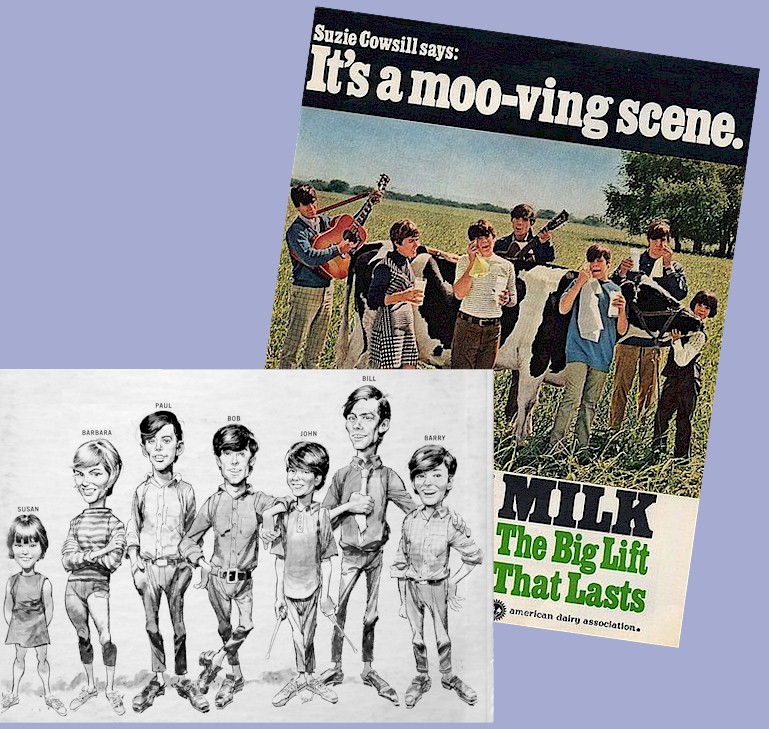
Relative value: The Cowsills advertise milk and (bottom) in cartoon form on the back sleeve of 1969's Best Of album.
|
|
As a family, The Cowsills have always stuck together, bonded by love. And as Susan notes, Cowsills-the-group never really broke up; their members simply engaged in other pursuits, sometimes for long stretches. Susan was for many years part of Americana collective The Continental Drifters. While he struggled with addition, Bill Cowsill made a name for himself in Canada, most notably with The Blue Shadows. John Cowsill joined The Beach Boys' touring band in 2000; he has been that group's drummer since 2008.
The Cowsills reconvened in the late 70s, cutting an album's worth of material eventually released digitally as Cocaine Drain. And most notably, in the early 90s, Bob, Paul, Susan and John recorded a superb collection of gently rocking tunes with soaring harmonies. One track, Is It Any Wonder, appeared on Jordan Oakes' 1993 power pop collection Yellow Pills. But the album went unreleased for many years.
Bob Cowsill recalls how the project ground to a halt. "It ended with us in a hotel room in Marina Del Rey, sitting across from two FBI agents," he says. Though The Cowsills themselves were wholly innocent and unaware of any malfeasance, the Bureau's investigation followed a money trail that led to the album's financier. "It just died right there," he says. That album, Global eventually saw limited release in 1998, earning rave critical reviews.
Matriarch Barbara Cowsill passed away in 1985; Bud died in 1992. Then after suffering years of ill health, Bill Cowsill died in 2006. His passing came on the heels of the death of Barry Cowsill, who drowned during the flooding after Hurricane Katrina. Non-performing brother Richard Cowsill passed away in 2014.
For several years now, The Cowsills (Bob, Paula and Susan) have been performing as part of the Happy Together package concert tour. In between shows, the three continued to write new songs. The group enlisted its dedicated fan base to help finance a follow-up to Global using the PledgeMusic funding platform.
"Somewhere down the road, PledgeMusic went belly up . . . with all of our donors' money," Susan explains. About $40,000 disappeared. But Rock Positano - a philanthropist Susan refers to as "an angel" - funded the album's completion. Moreover, Bob says that Positano is committed to honouring all of the promised premiums for those who donated: "signed CDs, posters, whatever they [signed up for]."
|
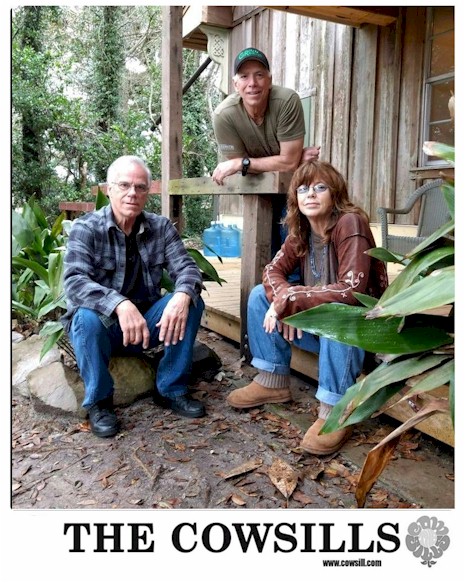
Sibling when you're winning: Bob, Paul and Susan Cowsill in 2022
|
|
Rhythm Of The World features 11 new Cowsills songs, all written by the group. And in line with the indefatigable optimism that has seen the family (and band) through difficult times, there's a message at the core of the music. "We're just . . . suggesting," says Bob Cowsill. "We're making suggestions. You can blow up the world, or you can take care of it."
Bob - now 73 - believes that there are advantages in ageing. "We're more aware," he says. "So, we write about things that apply more today. And it's all coming with love." "And," adds Paul, "we want to bring harmony back." "Literally," says Susan.
Some 57 years after that first single on JoDa, The Cowsills remain what they've always been: a family band. "Our sons are with us," says Bob. "Paul's son Brandon plays guitar," Bob's son Ryan is on keyboards. Susan's husband (and former Continental Drifters band-mate) Russ Broussard plays the drums. And while the group enjoys playing 60s classics today's Cowsills look forward to focusing on the new Rhythm Of The World material. Meanwhile, now in its 62nd episode, the Cowsills podcast - a chance to chat with fellow pop legends - continues with a new episode every Wednesday.
As fascinating as it is, that Family Band documentary from a decade ago didn't have a satisfying ending. In a sense, the film's takeaway is that the family - some of them, at least - survived. But the story continues. "They're going to need another documentary," Paul quips. Bob and Susan chime in, in perfect harmony: "We're working on a new ending."
|
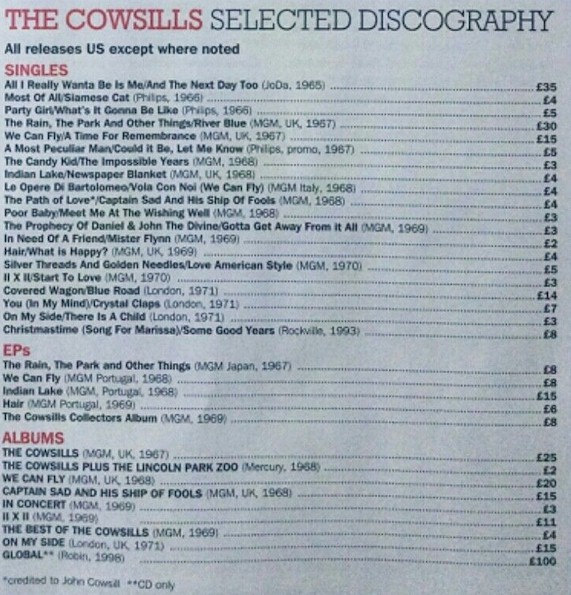
|
|











